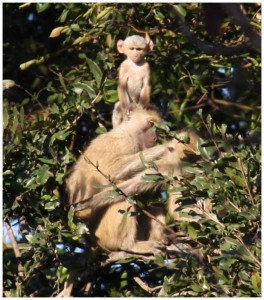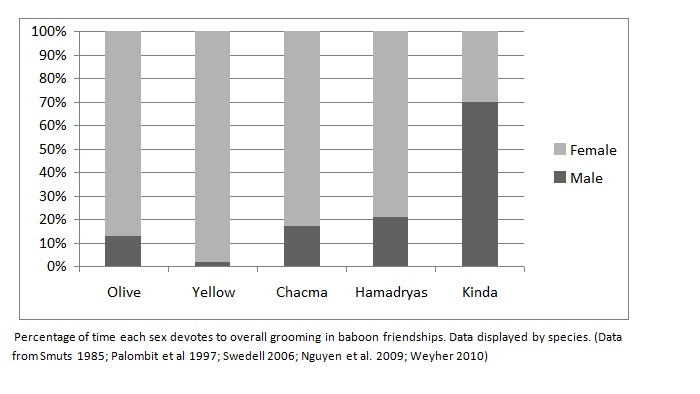
Friendship in humans is complex and multi-dimension, making friendship hard to define but a number of qualities are often used to distinguish friendship. These include loyalty, companionship, commitment, affection, acceptance, intimacy, sympathy and concern for the others welfare (see Silk 2002). The definition of human friendship is also likely to vary by culture.
Very generally across mammals and birds friendship can be broadly defined as an affiliative bond between non-kin. These friendships are found both within and between sexes. The definition of friendship in baboons is much more specific. Baboon friendship is defined as an affiliative bond between an adult male and a non-cycling, pregnant or lactating adult female. These friendships are characterized by high rates of grooming and time spent in proximity to one another. Baboon friendship is seen in all well-known baboon taxa.

Friendship in baboons has been studied for several decades. Different baboon species differ in the quality of their friendships and the reason for their formation however; these friendships have a common similarity. Baboon females primarily initiate and maintain friendships and they are the primary groomer. Male friends on the other hand groom their female friends much less often. Unexpected and fascinating is that my recent research on Kinda baboons shows that this rule does not hold true for Kindas.
Last May and June I conducted a study on Kinda baboons in Kafue National Park, Zambia. I collected data on male-female grooming pairs and quantified how much time each sex groomed the other. The results were drastically different from other baboons. In these grooming pairs males groomed 70% of the time while females groomed the remaining 30%.

The graph displayed here shows the stark contrast between grooming time in Kinda baboons versus other baboons.

Why is this so? I am not sure yet, but have several hypotheses for why Kinda males seem to be so nice. My job now is to tease this apart. Keep checking back for updates.
Anna Weyher
Kasanka Baboon Project
References: Silk JB. 2002. Using the’F’-word in primatology. Behaviour 139(2-3):421-446.


Ermmm, and just like their “cousins” they are also homosexual baboons amongst the ape’s. who are you to judge
this is vital
Interesting. I look forward to you book. God blessyou and all his creatures.
Comments are closed.